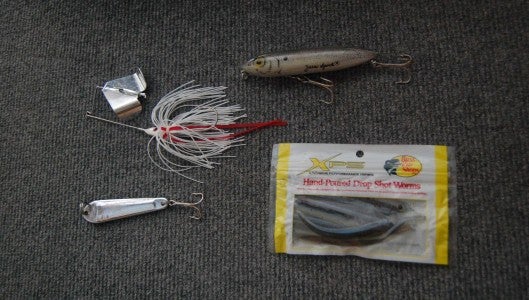Late summer fishing
Published 10:00 pm Wednesday, August 5, 2015
Just be straightforward, late summer fishing can be tough.
The water in most lakes is 85+ degrees at 6 a.m.; that is not something the fish enjoy. In fact, many local fish have trouble surviving very long in temperatures that high. The combination of high temperatures and lower dissolved oxygen levels is very stressful on fish.
Although you may see schools of fish early in the morning feeding shallow, this will not last long since the fish need to find a delicate balance of cooler water temps, along with enough oxygen just to survive the day. With this in mind, you need to fish accordingly.
Fishing shallow very early or late in the day is a very good way to catch fish and catch bigger fish. After they fill their bellies beyond full though, most fish turn very inactive, suspending at the right depth to get the coolest water and most oxygen available. This is usually found at or near a thermocline. To catch fish between dawn and dusk, you need to find the thermocline.
A sensitive depth finder is a big plus, they can show a strong thermocline on your graph, but you can also find indicators on a less sensitive graph such as where the bait is located, and the depth of most fish you mark on your graph.
As a general rule, Lake Lure and Lake Adger have a summer thermocline about 30 ft. If you do not have a graph, this is a good starting point for the depth you need to be fishing. Ideally, you want to fish just above the thermocline.
Is the thermocline really that big of a deal? The answer is yes. If you have ever been scuba diving or even swimming you can notice pockets of much cooler water. In scuba diving you can notice what feels like drastic temperature changes as you descend, sometimes in three to five foot intervals. It is amazing to me how much cooler the water can be just 15 feet down. In turn, as you ascend the much warmer temps are very noticeable.
Some of the best ways to fish thermoclines are to fish vertically with drop shot baits, jigging spoons, and shaky head worms. Trying to keep your bait in front of the fish for as long as possible. That doesn’t always mean fishing slow though. Fishing baits with a constant movement interrupted by abrupt erratic motions can trigger an inactive fish into biting, and hopefully the entire school of fish, if present, will start to feed.
To find some of the most active fish, find where the thermocline intersects the bottom depth. The fish suspended in open water can be more numerous but harder to trigger a bite.
Strangely enough, a full moon can cause fish to feed in the middle of the day. I personally don’t like fishing full moon phases, but if I had to fish in the hot of the day, I would prefer fishing on a full moon.
Summer fishing is probably best right at dark to just a couple hours after dark, and then right at dawn. Fish shallow early and late with top water baits, plastic worms, and fishing mid depths with crank baits. A buzz bait and crank bait are hard to beat for a bigger summer fish.
I’ve probably said this a thousand times in my columns, but one more time shouldn’t hurt: release fish as soon as possible in the summer. The stress of fighting, and being out of the water is a bad combination for hot summer water temps. Don’t put them in a live well; they may swim off, but are very likely to die later.



